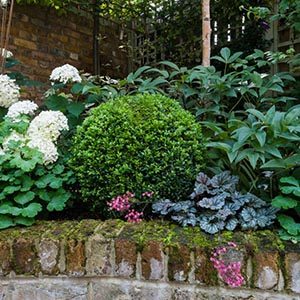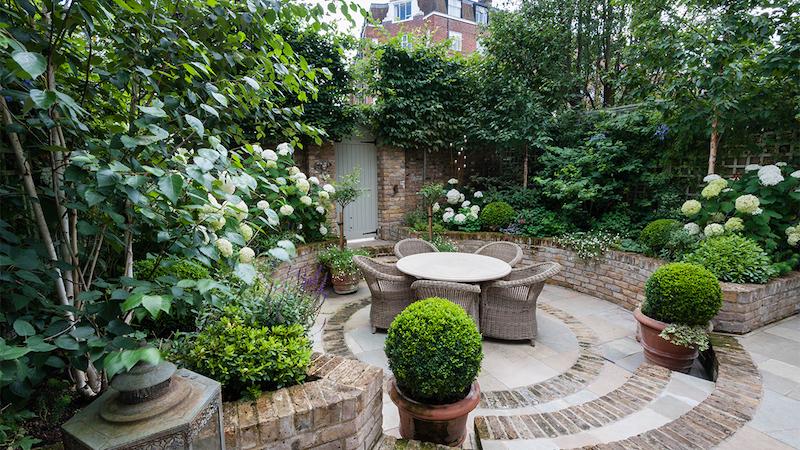In many urban areas small courtyards, such as this one in London, are tucked behind rowhouses and apartment buildings. What these petite playgrounds have in spades is the charm of an easily accessible garden. It buffers city noise, and adds a bit of country living in the city. The downside, of course, is a limited footprint. Designer Karen Rogers solved this problem by going up rather than outward. She constructed 4 ft. deep raised beds that allow for lots of layers. Beginning with a few trees that will be kept to scale with pruning. She then added a range of flowering shrubs, perennials, and vines so that something is always happening. Because you can’t really see the back of the raised bed, there’s the illusion of a larger space. (So many great takeaway–see it all here.)

The Details:
Varying shapes and staggered heights (globes, standards, bushy shrubs) help to create structure in these beds. Perennials and vines tucked in (such as heuchera, peonies, clematis) provide the sequence of interest throughout the year.
Takeaways: Lush Layers
- When you have a tight space, choose plants that do double (even triple) duty. The trees, for example, while they'll require pruning to maintain size, earn their keep by helping to create scale. They use the taller nearby buildings, mute city noise, and draw wildlife such as birds to the garden.
- Get greater impact in a small space by limiting the variety of plants and repeating them throughout the space. Case in point are the hydrangea and boxwood balls.
- Color is tricky in a small space because the eye will go there an nowhere else. If you use bold color (which we love), use it as a focal point so it feels intentional.





Please login to comment.
Don't have an account?
Sign Up for free